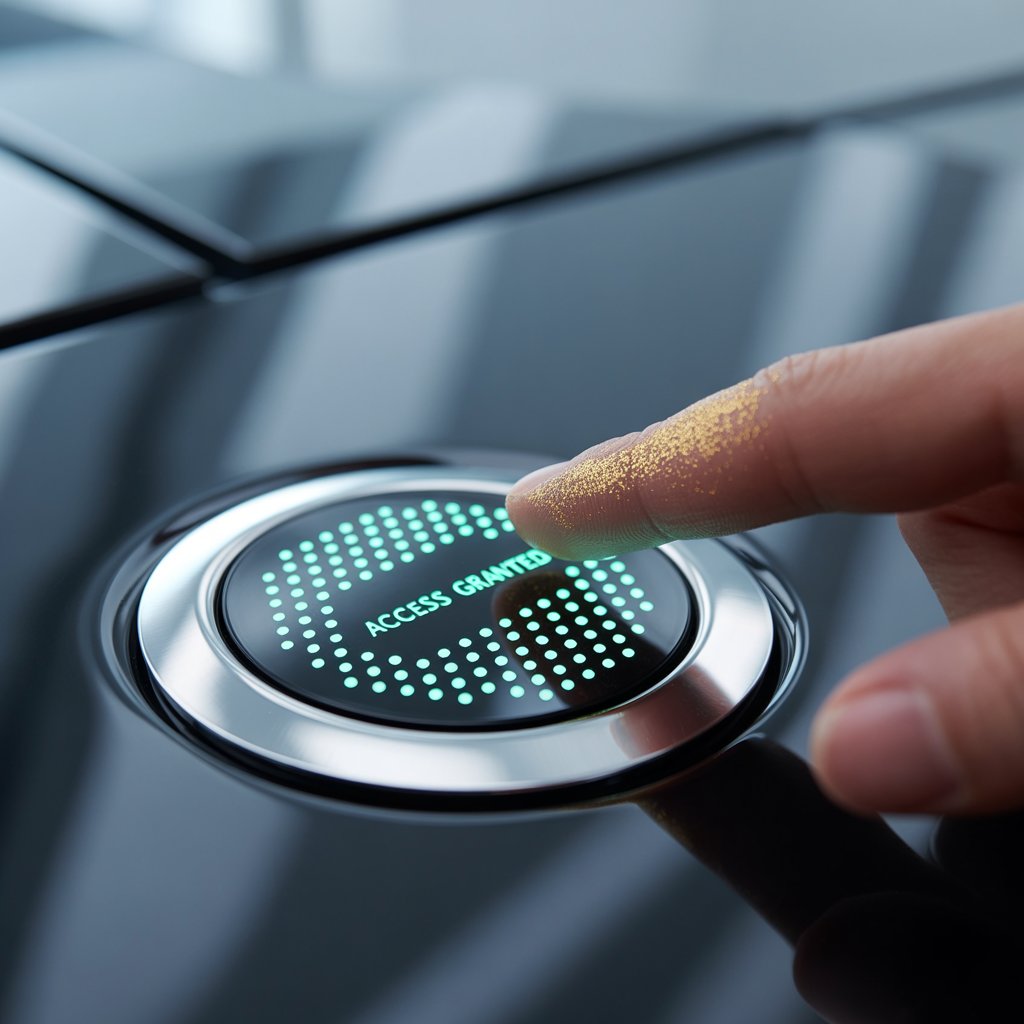As the protection of data and identity becomes paramount, biometric sensors have surfaced as a dependable, convenient, and cutting-edge solution. From unlocking smartphones with a glance to opening secure facilities with a fingerprint, biometric sensors are now seamlessly woven into our everyday routines. Yet what, exactly, are biometric sensors, and by which means do technologies such as face recognition and liveness detection render them trustworthy? Let’s venture into this captivating realm of modern security.
what are biometric sensors?
A biometric sensor is an apparatus that records a distinctive biological or behavioral characteristic from an individual to confirm their identity. In contrast with passwords or PIN codes, which can be lost, guessed, or stolen, distinct biometric characteristics—such as fingerprints, facial features, iris patterns, or voice—are each person’s own.
Biometric sensors achieve this by transforming physical or behavioral traits into digital data. The sensor gathers the trait, works on it, and matches it to a previously stored record to confirm the user’s identity. This procedure lessens the likelihood of unauthorized access while simultaneously increasing convenience for the user.
Classifications of Biometric Sensors
Across a wide array of shapes and configurations, each biometric sensor is tailored to meet distinct applications.
Fingerprint Sensors: Commonly serving smartphones and access-control systems alike, these devices capture the finger’s ridges and valleys.
Iris Scanners: Such sensors capture the distinctive patterns found in the colored portion of the eye.
Voice-Recognition Sensors: They examine a person’s pitch, tone, and rhythm.
Facial Recognition Sensors: These devices employ sophisticated algorithms to chart the distinctive traits of a person’s face.
Of the biometric modalities, facial recognition is experiencing a swift rise in popularity owing to its non-intrusive capability and its rapid authentication speed.
The Function of Face Recognition
Face recognition currently stands as one of the primary applications of biometric sensors. Face recognition systems pinpoint a person’s identity by examining facial landmarks—ranging from the inter-eye distance and the nose’s shape to the contour of the jawline.
The technology is already integrated into smartphones, smart home systems, airports, and even retail settings to enhance the customer experience. From a business standpoint, face recognition supplies an added layer of security while sparing users the burden of memorizing complicated passwords.
Nevertheless, owing to privacy worries and the risk of misuse, face recognition has drawn considerable criticism. Consequently, contemporary biometric systems embed liveness detection to fortify face recognition and enhance its overall reliability.
The importance of Liveness Detection
Liveness detection represents an advanced feature that ensures a biometric sensor engages with a genuine live individual, rather than a photograph, video, or mask. It becomes paramount for face recognition systems, which would otherwise fall victim to spoofing attacks.
Without liveness detection, an attacker could wave a printed photograph or a deep-fake video of an authorized user at the sensor to trick the system. To thwart this threat, liveness detection scrutinizes micro-indicators such as blinking, head movements, 3D depth measurements, and even the patterns of blood flow beneath the skin.
Ensuring that the biometric trait originates from a real, live person substantially lowers the likelihood of identity fraud. Today, it has become a common prerequisite for high-security applications ranging from mobile banking and remote onboarding to border control.
The Benefits of Biometric Sensors
The ubiquity of biometric sensors brings a host of attractive benefits:
Heightened Security: Because biological traits are not easy to duplicate, unauthorized access becomes markedly more difficult.
Convenience: No need to keep track of intricate passwords or lug around physical tokens your identity is always within reach.
Velocity: Authentication occurs in mere seconds, enhancing the user experience.
Fraud Prevention: By integrating liveness detection with multi-modal biometrics, security systems can efficiently detect and thwart spoofing.
Challenges and Considerations
Although they provide substantial advantages, biometric sensors still encounter their fair share of challenges. Privacy continues to be a primary concern. Users should be confident that their biometric data is safely stored and never exploited. Data breaches might carry serious repercussions, since once compromised, biometric traits are impossible to replace.
To mitigate these concerns, organizations should adopt robust data encryption, uphold rigorous privacy policies, and adhere to pertinent regulations such as GDPR. In addition, fusing several biometric modalities—such as fingerprint and facial recognition with liveness detection—can establish multi-layered security that further reduces risk.
The Future of Biometric Sensors
Biometric sensors seem poised for a bright future. As AI and machine learning keep advancing, sensors are becoming increasingly accurate, swifter, and harder to compromise. Advances such as contactless fingerprint readers, 3D facial recognition, and behavioral biometrics are broadening the range of possibilities.
Over the next few years, biometric sensors are likely to assume an even larger role in digital payments, remote work, smart cities, and IoT technology. By effortlessly combining security with convenience, they could fundamentally transform the ways we verify and safeguard our identities.
Final Thoughts
Biometric sensors constitute a major advance in secure authentication. Using face recognition in tandem with liveness detection, they deliver strong protection against fraud while still delivering a smooth user experience. Nonetheless, as is true of all technologies, responsibly leveraging their full capabilities hinges on thoughtful deployment, stringent data-protection safeguards, and user awareness.
Be it unlocking your phone, stepping aboard a flight, or logging into your online banking, biometric sensors operate discreetly behind the scenes to shield your identity—one fingerprint, facial scan, or iris pattern at a time.



